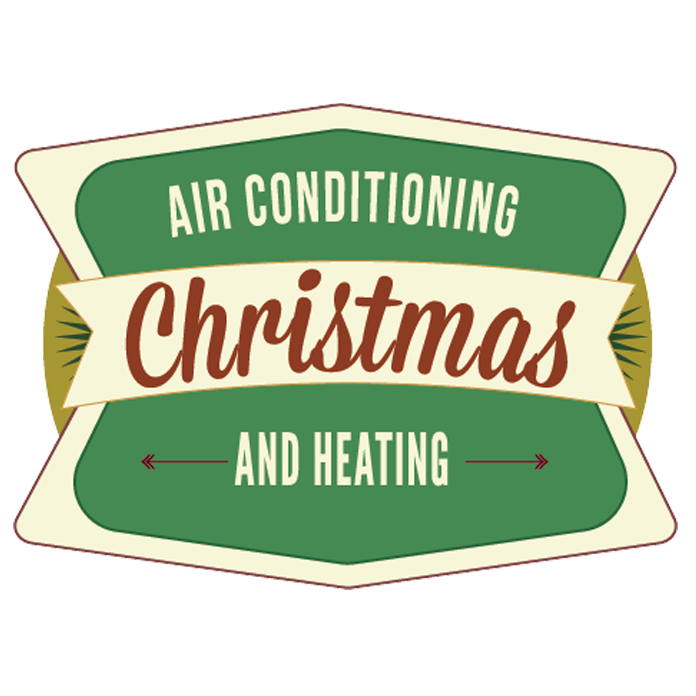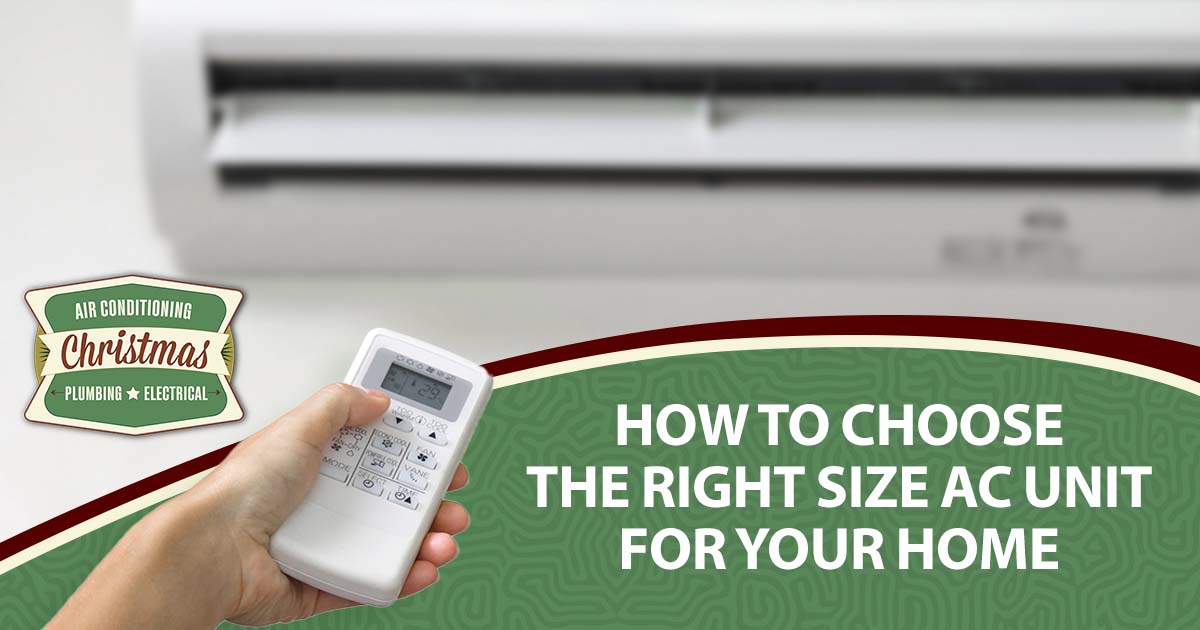Selecting the correct AC unit size is crucial for both comfort and energy efficiency. An undersized system will have difficulty cooling the home effectively, while an oversized unit may short-cycle, causing temperature inconsistencies and increased energy costs. Knowing the key factors that influence AC sizing helps homeowners make informed choices and optimize cooling performance.
Understanding AC Unit Sizing
What Does AC Size Mean?
AC unit size refers to the system’s cooling capacity, measured in British Thermal Units (BTUs). The higher the BTU rating, the more cooling power the unit provides. Choosing the correct size depends on square footage, climate, and insulation.
Why Proper Sizing Matters for Efficiency
An appropriately sized AC unit operates efficiently, maintaining consistent indoor temperatures while using minimal energy. A too-large system will cool the space too quickly, leading to frequent on-and-off cycles that increase wear and tear. A unit that is too small will run continuously, resulting in higher utility costs and reduced lifespan.
Common Problems with an Oversized or Undersized AC Unit
- Oversized AC Unit: Causes short cycling, increased humidity, and uneven cooling.
- Undersized AC Unit: Runs continuously, struggles to reach the set temperature, and leads to higher energy bills.
- Both Issues: Reduce system efficiency, increase maintenance needs, and shorten the unit’s lifespan.
Proper AC sizing is critical in ensuring optimal home comfort and energy savings. The following section will explore key factors influencing the correct AC unit size.
Factors That Determine the Right AC Unit Size
Square Footage and Cooling Capacity
The size of the home is a primary factor in determining the correct AC unit size. Larger spaces require higher BTU ratings to maintain consistent cooling. A general guideline is:
- Up to 1,000 sq. ft. – 18,000 BTUs
- 1,000 to 1,500 sq. ft. – 24,000 BTUs
- 1,500 to 2,000 sq. ft. – 30,000 BTUs
- 2,000 to 2,500 sq. ft. – 36,000 BTUs
However, other factors beyond square footage impact the final BTU calculation.
Climate Considerations and Seasonal Factors
Homes in hotter climates require more cooling capacity than those in milder regions. For example, an AC unit in Texas must work harder than one in a northern state. Based on local weather patterns, adjustments to BTU recommendations may be necessary.
Home Insulation and Energy Efficiency
Proper insulation helps retain cooled air, reducing the workload on an AC unit. Homes with poor insulation may require a more extensive system to compensate for heat gain. Energy-efficient windows, doors, and roofing also play a role in determining the right AC size.
Number of Occupants and Heat-Generating Appliances
More people in a home generate additional body heat, requiring more cooling power. Likewise, heat-producing appliances such as ovens, computers, and televisions can increase indoor temperatures. These factors should be considered when determining the appropriate AC unit size. Accurately assessing these factors ensures an appropriately sized AC unit that delivers consistent comfort and energy efficiency. The following section will explain calculating the correct BTU rating and SEER efficiency for optimal performance.
How to Calculate the Correct AC Unit Size
BTUs and How They Affect Cooling Power
British Thermal Units (BTUs) measure an AC unit’s cooling capacity. The higher the BTU rating, the more influential the cooling. A standard calculation considers the home’s square footage, but additional adjustments may be needed for factors such as ceiling height, number of windows, and sun exposure. A basic formula for estimating BTU requirements is: Square footage×20=Estimated BTUstext{Square footage} times 20 = text{Estimated BTUs}Square footage×20=Estimated BTUs However, this estimate should be refined using a professional load calculation to ensure accuracy.
SEER Ratings and Energy Efficiency
The Seasonal Energy Efficiency Ratio (SEER) evaluates an AC unit’s efficiency, with higher ratings signifying improved energy performance and reduced operating expenses.
- Minimum SEER (14-16): Standard efficiency
- High SEER (17-21+): More energy savings over time
Selecting an AC unit with a high SEER rating can reduce electricity costs while maintaining optimal cooling performance.
Using Manual J Load Calculations for Accuracy
Manual J load calculations provide the most precise AC sizing by considering multiple factors, including:
- Home size and layout
- Insulation levels
- Window placement and type
- Local climate conditions
- Number of occupants and heat-generating appliances
Professional HVAC contractors use Manual J calculations to determine the ideal system size, ensuring efficient cooling and long-term performance. Correctly calculating the right AC unit size helps homeowners avoid inefficiencies and costly energy bills. The following section will explore different types of AC units and their suitability for various home layouts.
Choosing the Right Type of AC Unit
Central Air Conditioners vs. Ductless Mini-Splits
Central Air Conditioners are ideal for homes with existing ductwork. They provide whole-home cooling and are controlled by a single thermostat. However, installation costs can be high, and duct leaks may reduce efficiency. Ductless Mini-Split Systems are a good option for homes without ductwork or targeted cooling in specific areas. They offer:
- Individual temperature control for different rooms
- Higher energy efficiency due to the absence of ducts
- Easier installation compared to central AC systems
Heat Pumps for Year-round Efficiency
Heat pumps function as air conditioners and heaters, making them a versatile option for homeowners in moderate climates. They are energy-efficient and can significantly reduce heating and cooling costs. However, in extreme cold, a supplemental heating system may be required.
Window Units and Portable ACs for Small Spaces
Window units and portable ACs provide an affordable alternative for cooling a single room or small space. While they are easy to install and require minimal maintenance, they are less efficient than whole-home cooling solutions and may not be suitable for larger homes. Selecting the correct type of AC unit depends on the home’s layout, cooling needs, and budget. The following section will discuss the importance of professional AC sizing and installation.
Professional AC Sizing and Installation
Why a Professional AC Assessment Is Crucial
A professional HVAC assessment ensures the home’s AC unit is correctly sized. HVAC technicians use Manual J load calculations to factor in insulation levels, windows, climate conditions, and other variables that affect cooling efficiency. Without a professional assessment, homeowners may end up with an AC unit that is too large or too small, leading to inefficiency and increased costs.
Common Mistakes to Avoid When Selecting an AC Unit
Choosing the wrong AC size can lead to a range of issues. Common mistakes include:
- Relying only on square footage estimates – This ignores factors like insulation, ceiling height, and sun exposure.
- Choosing an oversized unit for faster cooling – While it may cool the home quickly, it leads to short cycling, excess humidity, and higher energy bills.
- Undersizing the AC to save money – A smaller unit will run continuously, increasing wear and tear while failing to maintain a comfortable temperature.
The Importance of Proper Installation for Performance
Even the best AC unit will not function efficiently if improperly installed. Professional installation ensures:
- Correct refrigerant levels for optimal cooling performance
- Proper ductwork sealing to prevent energy loss.
- Adequate airflow and ventilation for even temperature distribution
Professional AC sizing and installation are key to maximizing comfort and efficiency. The following section will outline essential maintenance tips to keep an AC unit running efficiently over time.
Maintaining Your AC Unit for Long-Term Efficiency
Regular Filter Changes to Improve Airflow
One of the simplest yet most effective ways to maintain an AC unit is by regularly changing or cleaning the air filter. A clogged filter restricts airflow, forcing the system to work harder and consume more energy. Most manufacturers recommend checking filters every one to three months, depending on usage and indoor air quality.
Annual Professional Maintenance Checks
Routine inspections by an HVAC technician help prevent unexpected breakdowns and extend the lifespan of the AC unit. A professional maintenance check typically includes the following:
- Inspecting and cleaning the evaporator and condenser coils
- Checking refrigerant levels for efficiency
- Ensuring all electrical connections are secure
- Examining the thermostat for accurate temperature control
Keeping the Outdoor Unit Clean and Unobstructed
The outdoor condenser unit should remain free of debris like leaves, dirt, and grass clippings. Homeowners should:
- Trim vegetation at least two feet around the unit for proper airflow
- Periodically hose off the unit to remove dust buildup
- Ensure the unit is level to prevent strain on internal components
Monitoring Energy Bills for Performance Issues
A sudden energy cost increase may indicate an AC unit issue. If cooling efficiency drops, it may be time for maintenance, repairs, or even a system upgrade. Proper maintenance ensures the AC unit operates efficiently and extends its lifespan. The following section will discuss when to consider upgrading to a newer, more efficient system.
When to Upgrade Your AC Unit
Signs Your AC Unit Is No Longer Efficient
Over time, an air conditioner loses efficiency and may no longer provide optimal cooling. Common signs that indicate it’s time for a replacement include:
- Frequent breakdowns – If repair costs increase, replacing the unit may be more cost-effective.
- Rising energy bills – Older units consume more power, increasing monthly electricity costs.
- Inconsistent cooling – Hot spots or fluctuating temperatures indicate an aging or undersized system.
- Excessive noise – Grinding, rattling, or buzzing sounds suggest internal wear and tear.
Upgrading to a High-Efficiency System
Newer AC models come with higher SEER ratings, improving energy efficiency and lowering cooling costs. Modern systems also offer:
- Smart thermostats for precise temperature control
- Variable-speed compressors for better energy efficiency
- Eco-friendly refrigerants that reduce environmental impact
Homeowners replacing an outdated unit can see significant energy savings and improved indoor comfort.
Rebates and Incentives for Energy-Efficient ACs
Many utility companies and government programs offer rebates for upgrading to Energy Star-certified air conditioners. Homeowners should check for available incentives that can help offset installation costs. Recognizing when to replace an AC unit helps ensure consistent cooling and energy efficiency. The following section guides you in selecting a professional HVAC service for installation and maintenance.
Choosing a Professional HVAC Service
Qualities to Look for in an HVAC Contractor
Selecting the right HVAC contractor ensures proper AC installation and long-term performance. Homeowners should look for:
- Licensing and certifications – A reputable contractor should be licensed and insured. Certifications from organizations like NATE (North American Technician Excellence) indicate expertise.
- Experience with AC installations – Contractors with a strong track record are likelier to size and install units correctly.
- Customer reviews and references – Checking online reviews and requesting references helps verify reliability and service quality.
- Transparent pricing and warranties – A professional contractor should provide precise estimates and warranty coverage for equipment and labor.
Why Professional Installation Matters
Improper AC installation can lead to efficiency issues and costly repairs. A skilled HVAC technician ensures:
- The system is correctly sized using Manual J-load calculations
- The ductwork is adequately sealed to prevent energy loss.
- Refrigerant levels are accurately charged for optimal cooling.
- The unit is tested for performance before final approval.
Scheduling Routine Maintenance Services
Regular HVAC service appointments help prevent breakdowns and extend the unit’s lifespan. Many HVAC companies offer maintenance plans that include:
- Seasonal tune-ups
- Priority service for emergency repairs
- Discounts on parts and labor
Working with a professional HVAC service ensures efficient AC operation and long-term reliability.
📞 Get Expert AC Installation and Service Today!
Choosing the right size AC unit is essential for home comfort and energy savings. Trust the experts at Christmas Air Conditioning, and Plumbing for professional AC installation, maintenance, and repair. Contact our team today at 469-919-9928 to schedule an assessment and ensure your home stays cool and efficient year-round.

